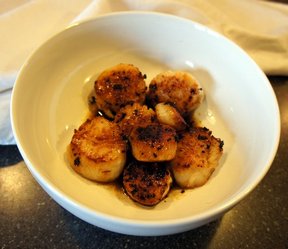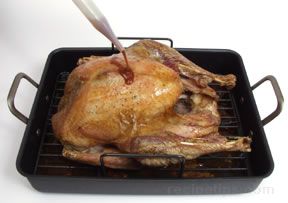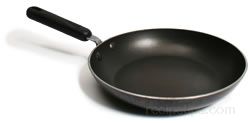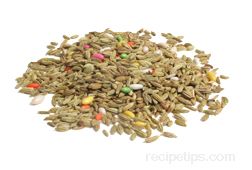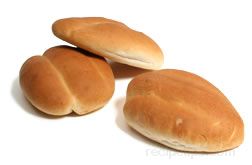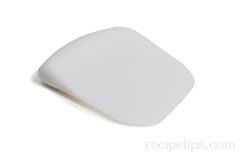Some pans will be constructed of anodized aluminum while others may be enameled steel or stainless steel, any of which can be made into high or low quality products. Generally, check the quality of the manufacturer to insure the quality of the pan. The weight and overall construction of the pan should be sufficient to allow for good heat conduction, so some areas of the pan do not become hotter than others, thus cooking various parts of the food faster that other parts. Thinly constructed pans will have a tendency to cause foods to burn faster than pans with thicker construction that may be made of several layers of metal, such as 5-ply stainless steel pan. Also, thinner metals will warp and cause a build-up of juices in uneven sections of the pan. Materials such as stainless steel are good materials for cooking but not when only the interior or exterior surface is all that is provided for the roasting pan. There needs to be at least one layer sandwiched between two layers of stainless steel. Most often an aluminum layer, which is much better for an even conduction of heat, will be used as the material to be layered between the stainless. When pans conduct heat evenly and without uncontrolled periods of rapid increases and decreases in temperature, then the pan remains flat and most often will not warp. Thus, check the pan materials and construction to insure consistency in the items to be cooked in the Roasting Pan. The pan bottom should be well shaped, sturdy, and evenly spread across the bottom, allowing it to lie perfectly flat on a hard surface and not be prone to changing shape when heat is applied to the pan. The walls of the pan will vary in height, but should be sufficient to reduce splattering juices from escaping. Some companies produce pans with non-stick surfaces that resist scratches when exposed to metal utensils, which is a helpful feature.
There are roasting pans produced with lids having protruding embossed spots dispersed throughout the pan lid that help to gather moisture. As the moisture builds up on the lid and becomes heavy, it moves to the protruding spot and then drips back onto the food being cooked. The pan is oval shaped with deep sides and a large domed cover. It is available in several sizes and material, such as granite, anodized aluminum, and stainless steel. The meat is cooked with the cover on, which acts as an oven in an oven, resulting in the meat cooking more quickly and in a moister environment. This pan may also be referred to as a roaster or a French oven. Roasting pans are readily available in hardware stores, appliance stores, and houseware departments of major retail chain stores.







